
Peterhead is a town in Aberdeenshire, Scotland. It is Aberdeenshire's biggest settlement, with a population of 18,537 at the 2011 Census. It is the biggest fishing port in the United Kingdom for total landings by UK vessels, according to a 2019 survey.

Duffus is a village and parish in Moray, Scotland.

Mintlaw(literally meaning a smooth, flat place) is a large village in Aberdeenshire, Scotland. It lies at the intersection of the A950 and A952 roads, west of Peterhead. The 2001 UK census records a population of 2,647 people.

Longside is a village located in Aberdeenshire, Scotland, consisting of a single main street. It lies seven miles inland from Peterhead and two miles from Mintlaw on the A950. Its population in 2001 was 721. The River Ugie flows through it.
William Smith was a Scottish architect. He was a son of John Smith, also an architect, and his mother was Margaret Grant. A partner in the Aberdonian firms J & W Smith (1845–1879), W & J Smith (1879–1887) and W & J Smith and Kelly (1887–1891), and employed as Aberdeen's superintendent of works (1852–1891), he designed a large number of buildings in north east Scotland.
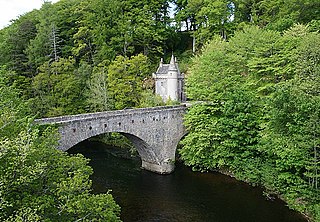
The Bridge of Avon is a bridge over the River Avon at Ballindalloch in Moray, Scotland, built between 1800 and 1801 by George Burn. The bridge is mainly rubble-built, with an abutment on the south bank, and a pier with a cutwater on the north bank, of tooled ashlar. It crosses the river in a single wide segmental arch, with a smaller flood arch on the north bank.
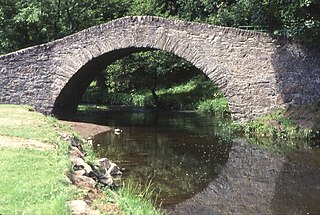
Keith Old Bridge, also known as Keith Auld Brig, is a bridge over the River Isla in Keith in Moray, Scotland. Built in 1609, it is the oldest surviving dated bridge in Moray and is a Category A listed building.

Braco's Banking House is a three-storey town house in Elgin, Moray in Scotland. The home and business place of banker William Duff of Braco from 1703 to 1722, the house has borne his name ever since. It was designated a Category A listed building in 1970.
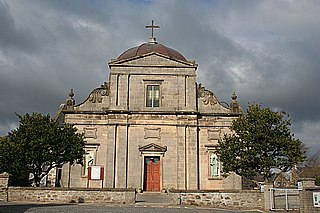
William Robertson was a Scottish architect. Born in Lonmay in Aberdeenshire, he started his career in Cullen, Moray, then moved to Elgin around 1821, where he practised for the rest of his life. He established himself as the foremost architect of his period north of Aberdeen, described by Charles McKean as "possibly the north of Scotland's first native classical architect of substance." His practice was continued by his nephews Alexander and William Reid, and their partners and successors J and W Wittet.
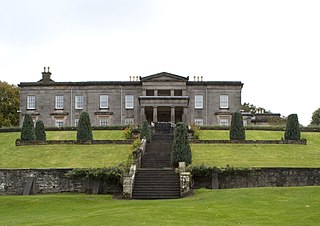
Aberlour House is a country house near Aberlour in Moray, Scotland. It was built in 1838 by William Robertson for Alexander Grant, planter and merchant from Aberlour, after his return to the UK. His niece, Margaret Macpherson Grant, lived in it after Grant died, and it was later home to John Ritchie Findlay of The Scotsman newspaper and his descendants. It was requisitioned for military use during the Second World War, and after the war was sold for use as a preparatory school for Gordonstoun. The school was later moved into Gordonstoun's estate, and the building was sold to Walkers Shortbread, who restored and renovated it, and now use it as their head office. It has been designated a Category A listed building.

Moy House is an 18th-century country house near Forres in Moray, Scotland. Built on the site of an older house by Collen Williamson and John Adam in the mid eighteenth century for Sir Ludovic Grant of Grant, it was the first building designed by a member of the Adam family to be built in Moray. It was designated a Category A listed building in 1971, and has been listed on the Buildings at Risk Register for Scotland since 1990; ravaged by fire in 1995, it is now a ruin.

The Little Cross is a monument in Elgin, Scotland, located at end of the city's High Street. It marks the boundary between secular Elgin and the religious Chanonry, a part of the town that had historically been given over to ecclesiastical governance under the Bishops of Moray. The Elgin Museum, one of the oldest in the country, is directly adjacent to the structure. The name 'Little Cross' differentiates it from Elgin's 'Muckle Cross', the name of the town's market cross.
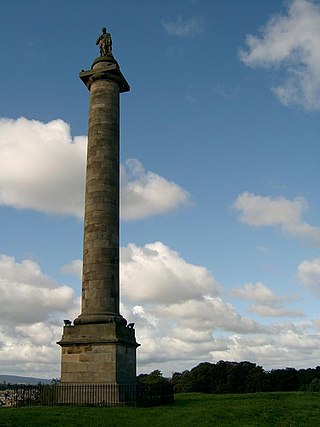
Thomas Goodwillie was a Scottish sculptor active in Moray in the nineteenth century. He is known for carving the statue of George Gordon in his robes of the office of chancellor of Marischall College, Aberdeen, in 1855, which sits atop the Duke of Gordon's Monument, and for his work with David Bryce, creating many of the sculptures that decorate Cullen House. He worked with Alexander Reid on numerous buildings, including the parish church at Inverkeithny, and the Falconer Museum in Forres, for which he carved the faces of eminent scientists into the keystones of the arched interior. He also carved the bull's head into the keystone of the arch at the west front of Alexander Ross's large Italianate range at Home Farm in Kinloss, and he created the cartouche featuring Saint Giles in the town hall in Elgin.
Whitehill Lodge is a Category C listed building on Damhead Way in Peterhead, Aberdeenshire, Scotland. It is known to have been standing since at least the early 1870s, possibly earlier. Its prominent features are a log-column porch and decorative bargeboards.

The Fish-House is a Category B listed building on Golf Road in the Buchanhaven area of Peterhead, Aberdeenshire, Scotland. One of the two right-angled blocks dates from 1585, making it the oldest building in Peterhead. Walker and Woodworth state the structure was built as a coastal store for Inverugie Castle by William Keith, 4th Earl Marischal, whose initials are on a skewputt. They also state that it was "rebuilt c. 1801," but without clarification as to which building.

Old Parish Church is a Category A listed building located on Maiden Street in Peterhead, Aberdeenshire, Scotland. Local brothers Robert and John Mitchell built the church between 1804 and 1806, to a design by Alexander Laing, of Edinburgh. Its Burgerhuys bell dates to 1647.

The Bath House is a Category B listed building in Peterhead, Aberdeenshire, Scotland. Located at 7 Bath Street, it dates to around 1812.
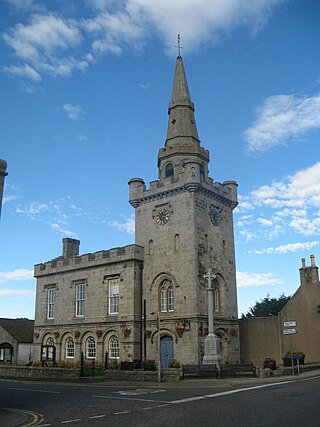
Strichen Town House is a municipal structure in High Street, Strichen, Aberdeenshire, Scotland. The building, which was the meeting place of Strichen Parish Council, is a Category A listed building.

Inverurie Town Hall is a municipal building in the Market Place in Inverurie, Scotland. The structure, which served as the meeting place of Inverurie Burgh Council, is a Category B listed building.
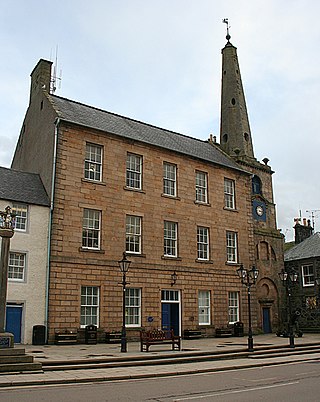
Banff Town House is a municipal building in Low Street, Banff, Aberdeenshire, Scotland. The building, which is used as a customer service point and job centre, forms part of a complex consisting of a steeple, completed in 1767, which is a Category A listed building, and a town house, completed in 1797, which is also a Category A listed building.


















